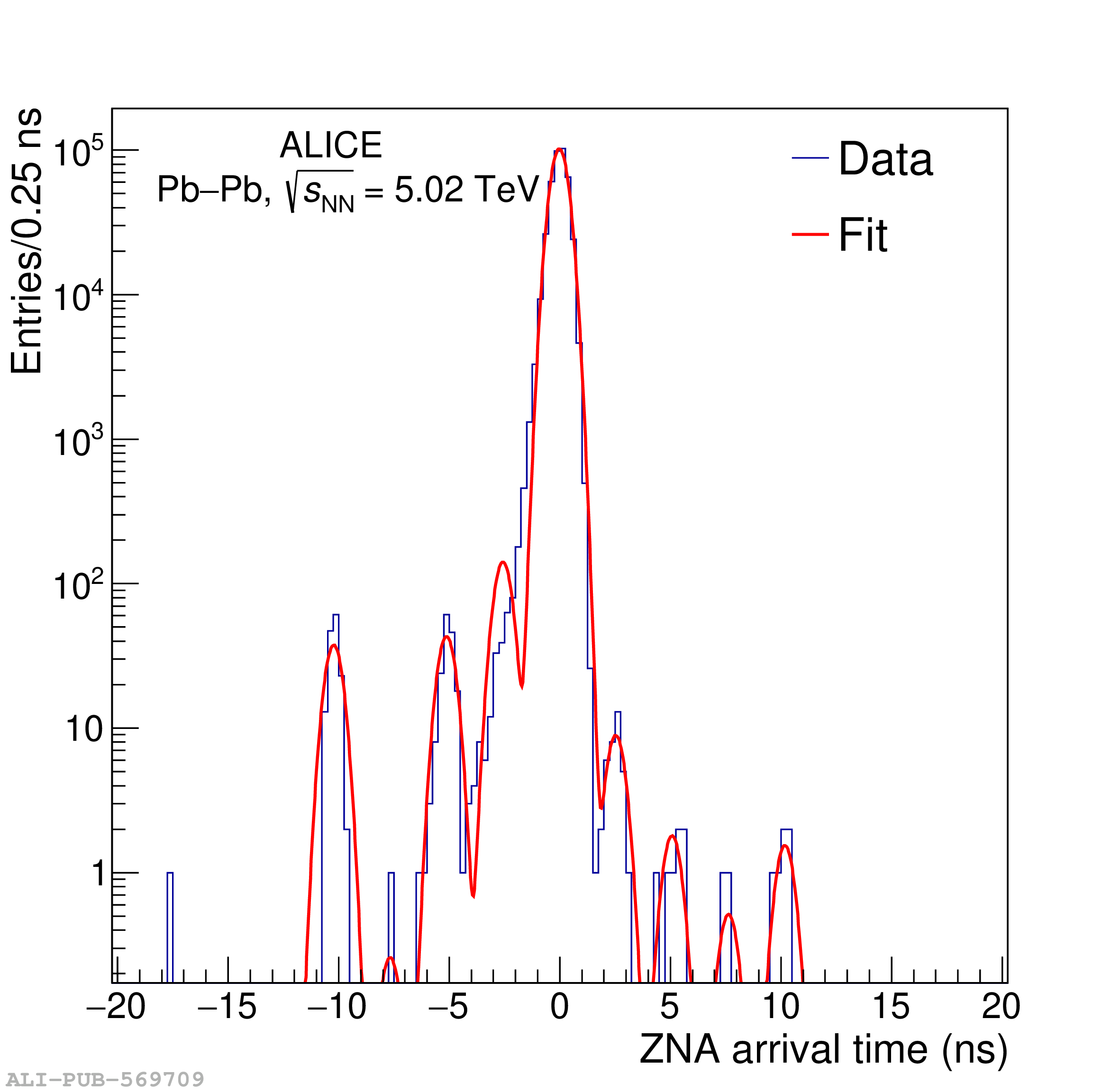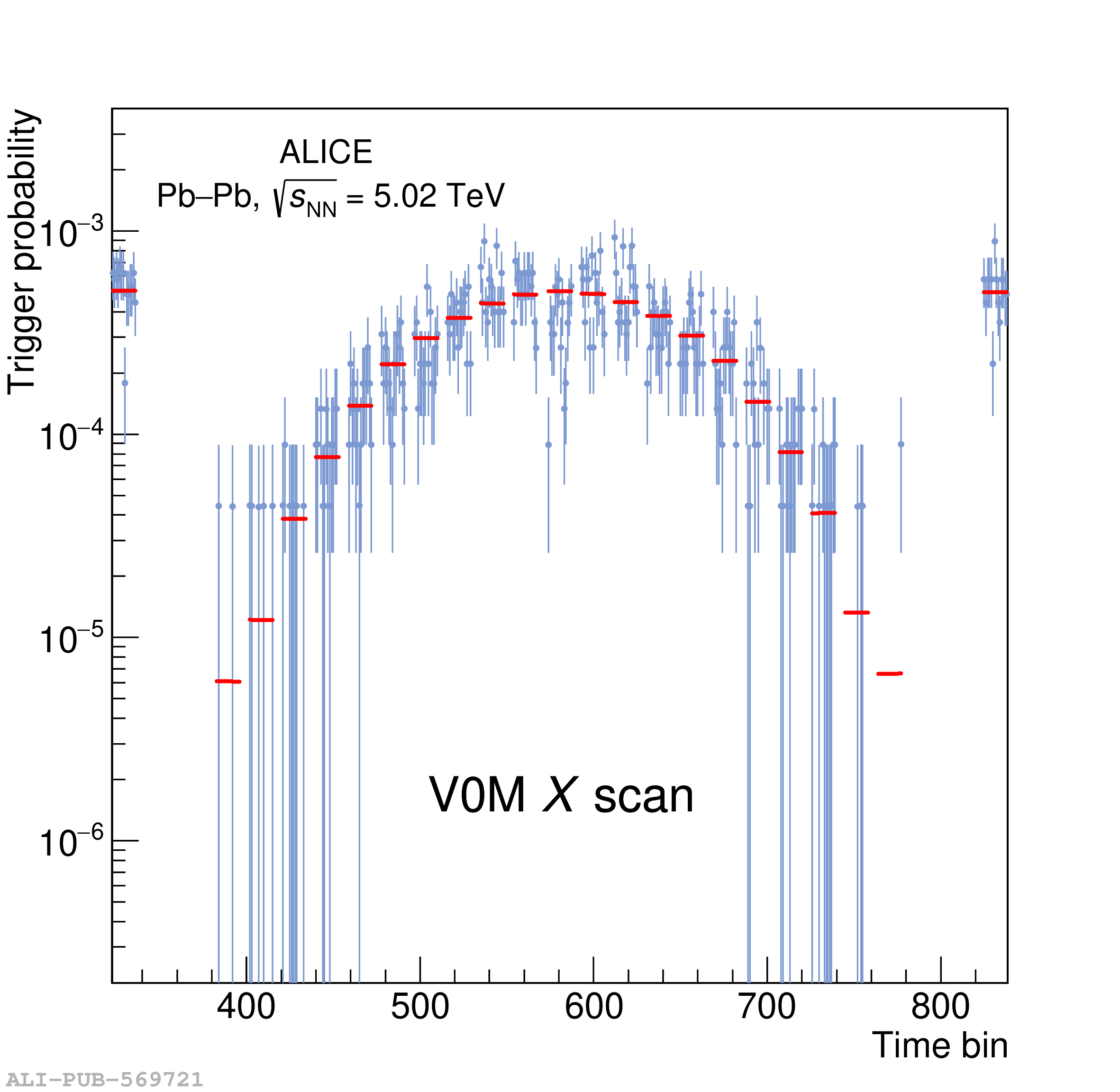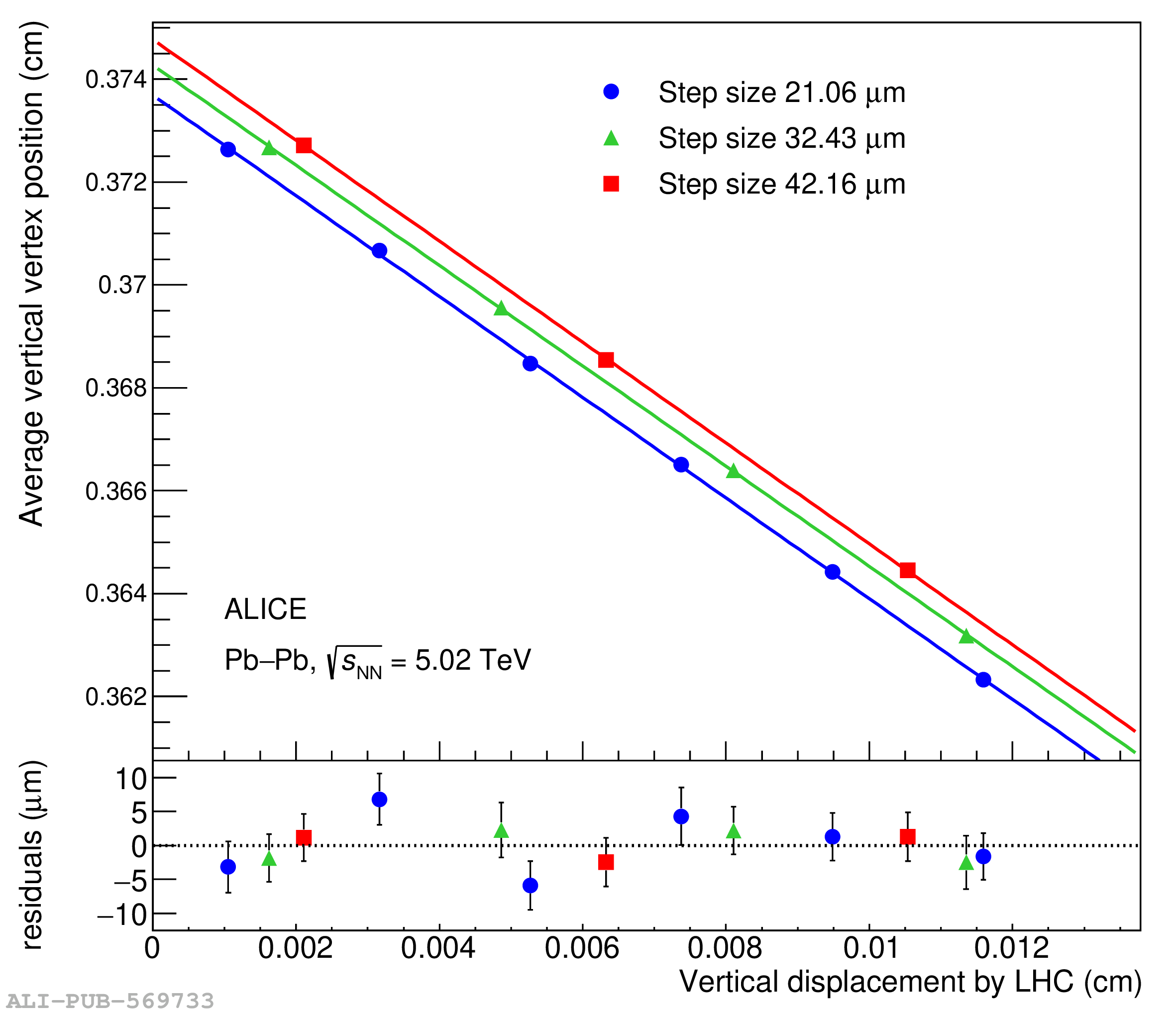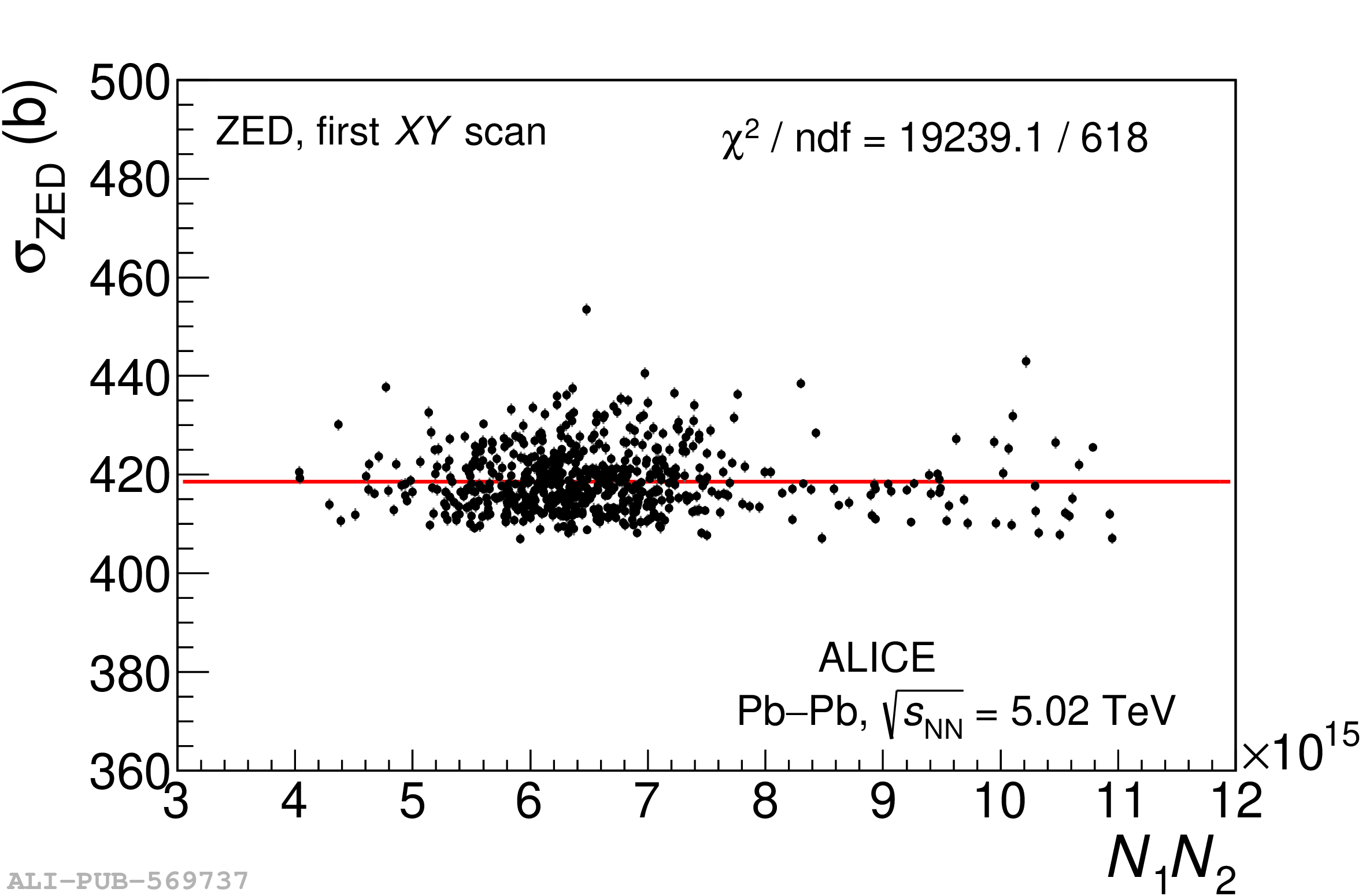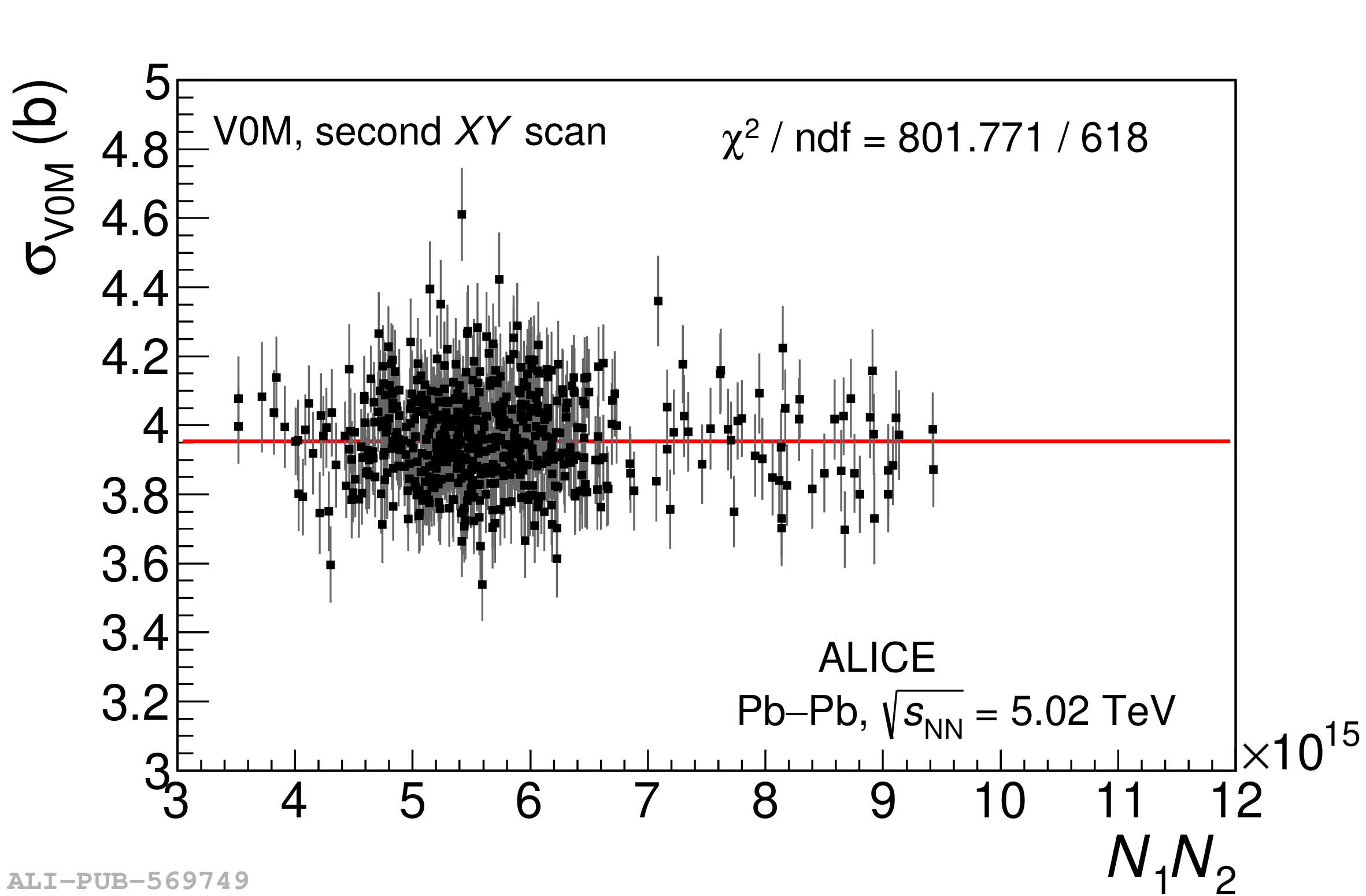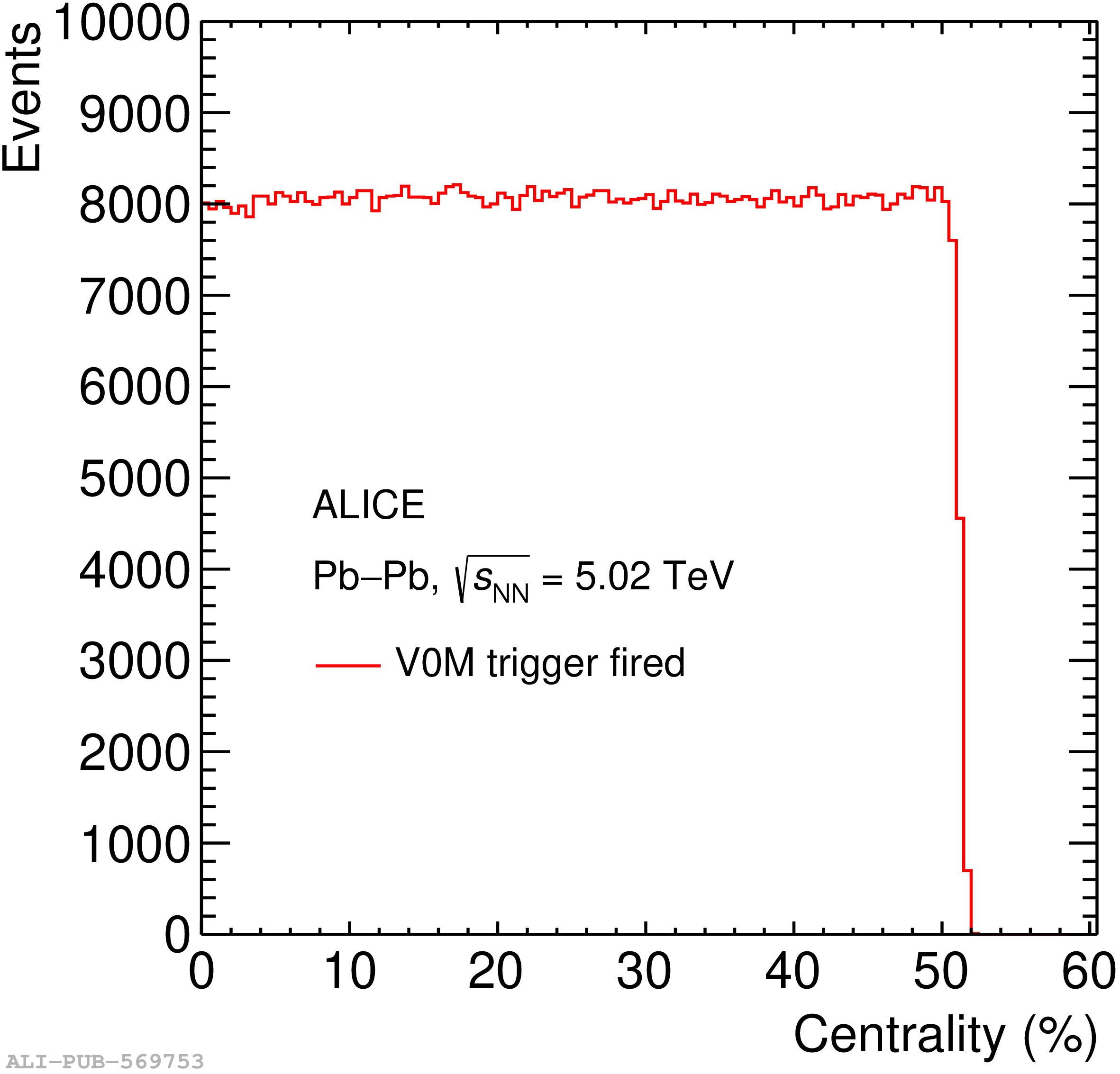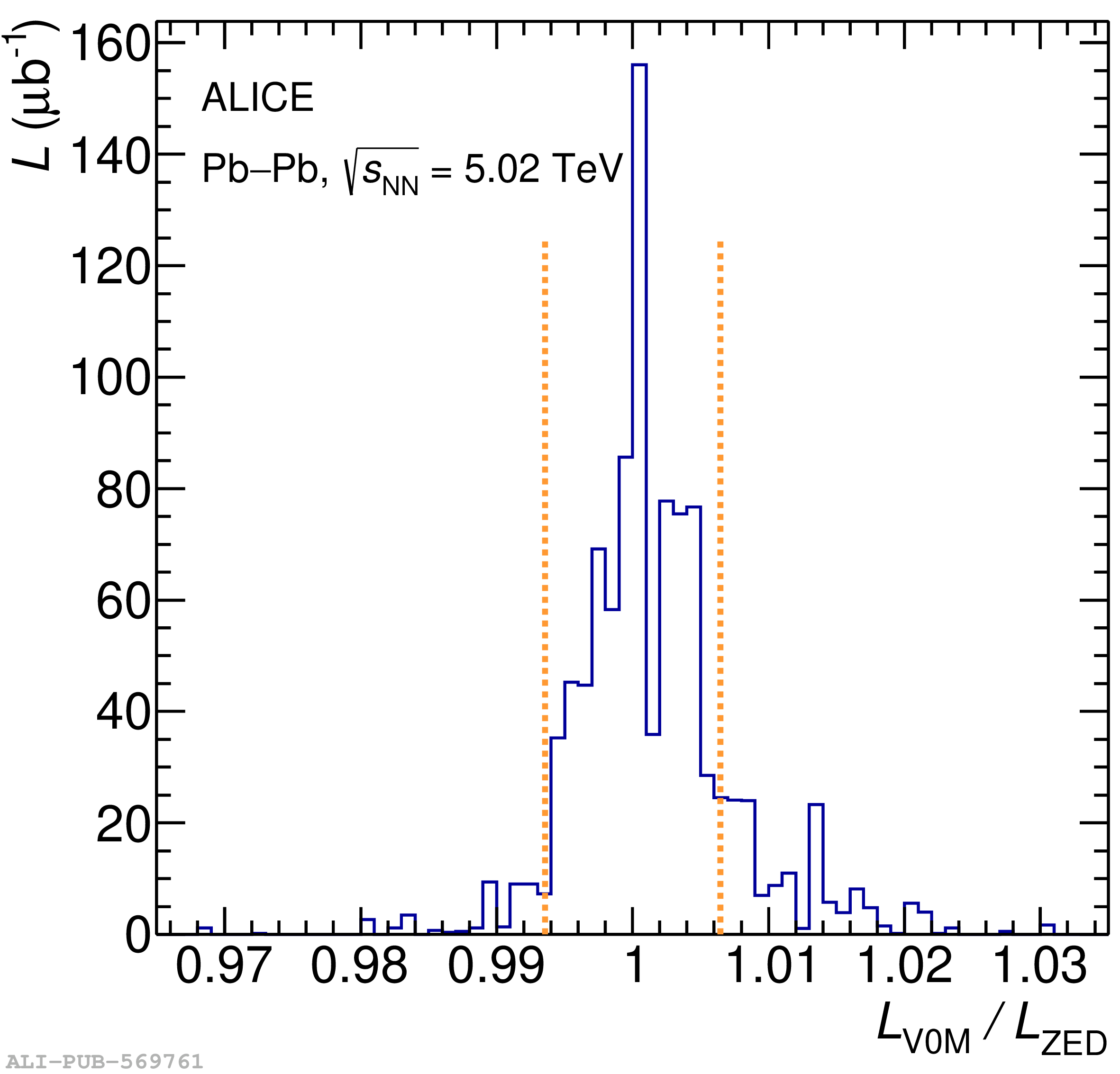Luminosity determination within the ALICE experiment is based on the measurement, in van der Meer scans, of the cross sections for visible processes involving one or more detectors (visible cross sections). In 2015 and 2018, the Large Hadron Collider provided Pb$-$Pb collisions at a centre-of-mass energy per nucleon pair of $\sqrt{s_{\rm NN}} = 5.02$ TeV. Two visible cross sections, associated with particle detection in the Zero Degree Calorimeter (ZDC) and in the V0 detector, were measured in a van der Meer scan. This article describes the experimental set-up and the analysis procedure, and presents the measurement results. The analysis involves a comprehensive study of beam-related effects and an improved fitting procedure, compared to previous ALICE studies, for the extraction of the visible cross section. The resulting uncertainty of both the ZDC-based and the V0-based luminosity measurement for the full sample is 2.5%. The inelastic cross section for hadronic interactions in Pb$-$Pb collisions at $\sqrt{s_{\rm NN}} = 5.02$ TeV, obtained by efficiency correction of the V0-based visible cross section, was measured to be $7.67 \pm 0.25$ b, in agreement with predictions using the Glauber model.
JINST 19 (2024) P02039
e-Print: arXiv:2204.10148 | PDF | inSPIRE
CERN-EP-2022-072
Figure group


